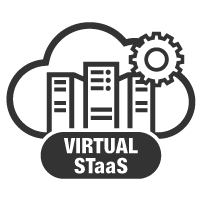Everything as a Service Can Actually Help Unlock New Business Outcomes


In the wake of COVID-19, we saw a significant shift toward as-a-service offerings, something we haven’t seen in years. From conversations with CIOs over the past 12 months, we know they are looking for the flexibility, efficiencies and cost savings they get from the as-a-service model. This is especially important to them as they evolve their business models in a hybrid IT direction and become consumers of IT. By reducing the need to own IT equipment and maintain the technology, they free up resources to transform the way they operate IT and deliver new services. But, at the same time, it’s equally essential for them to consider the impact on their organizations’ culture and skill-set demands.
If your business is looking at transitioning to an everything-as-a-service (XaaS) model, consider these common concerns that IT decision-makers have:
One CIO I spoke to last week stated that the line of business (LOB) considers internal IT to be a legacy organization, slow to deliver new modern services. Given the pressures to modernize infrastructure and applications to stay relevant, CIOs and their organizations are turning to the as-a-service model. XaaS provides the scalability and shorter time to value required for delivering IT at scale. The flexible consumption model also enables more predictable budgeting and frees up capital for innovation, modernization and growth.
Some may argue that it is not always enough to order a single service, such as a container, virtual machine, or capacity. A broader portfolio of application services is just as important. While the final decision usually rests between a capital or operating expenditure (capex or opex) investment, the factors that drive organizations to select as-a-service options are often shared. The goal is to drive business to more strategic outcomes rather than focus on managing IT, entitlements and spinning up single services.
After conducting more than 1,200 enterprise data center assessments, we’ve concluded that there’s potential for additional cost savings through consolidation, optimization and automation of the current data center. For example, we see a low asset utilization of the current on-premises environment. By transitioning to an infrastructure-as-a-service model, the average organization realized savings of more than 33% in total cost of ownership (TCO) reduction.
To put things into perspective, it’s worth remembering that as-a-service options have been around for a long time. In the early days of the computer industry, expensive mainframes and terminals were the latest technology that few small or medium-sized companies could afford to acquire. At that time, this new technology was considered the way for businesses to make money, save money or stay competitive in the market. For this reason, the as-a-service industry was born by strengthening business outcomes. Over the years, it has evolved from a “time-sharing system” model to the as-a-service model we know of today.
In the past decade, as-a-service has predominantly been dominated by a managed stack. Tight integration across a managed stack introduces a more robust as-a-service offering that provides choice and flexibility for customers. These services are delivered as a managed service combined with a flexible consumption model where customers select predefined services from a self-service portal with scale-up and scale-down capabilities.
XaaS today comes in all sorts of flavors, from infrastructure-as-a-service (IaaS), software- or applications-as-a-service (SaaS, AaaS) and storage-as-a-service (STaaS), to operations-as-a-service (OaaS) and data protection-as-a-service (DPaaS) models, with a portfolio of add-on services from which to choose.
The future looks promising, as we see further development of the managed stack of technology used today. The future direction is toward the continuous delivery of new features, functions and value typically delivered through a portal for ordering and provisioning. New features are added as they are released. Another development area in XaaS is the increasing use of AI to optimize and automate these services.
The ability to scale up or scale down will keep your IT costs in line with your business needs. If there is a need to cancel or adjust service, it is possible to grow or scale back consumption to align with future growth and reallocate resources from underutilized services.
Here are a couple of examples of as-a-service solutions driven from the public cloud:
 |
| Virtual Storage as a Service (VSTaaS) |
After speaking to a wide range of IT business leaders over the past year, it’s clear that the concerns many businesses have regarding XaaS revolve around making IT better, more optimized, more agile, more economical and more aligned with new required skill sets. For this reason, we believe that defining outcomes and closing skill gaps wherever possible will be critical factors for success when it comes to delivering the best IT service.
Overall, building your team’s skill set will be your most important endeavor during this process, along with adopting a tailored and measured approach suited for your organization. In light of this, team training or shifting job roles could prove instrumental in the success of your deployment and play an essential role in driving the business results you want.
If you’d like to learn more about how we could support your business with an everything-as-a-service (XaaS) solution, visit our EverFlex from Hitachi Vantara webpage on hitachivantara.com.
Tom Christensen is Global Technology Advisor and Executive Analyst at Hitachi Vantara.
Check out more great stories on Insights.

Tom has +30 years' experience in data center modernization, from compute and data infrastructure to hybrid and multicloud, applications, DataOps and big data analytics. He writes extensively about technology and advocates for sustainability and social innovation.